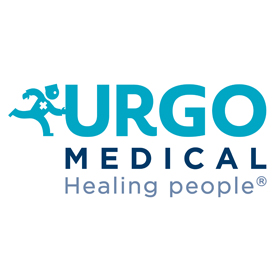Il miele medicale nella pratica clinica: la nostra esperienza in 75 casi trattati

Ricevuto: 18 febbraio 2020
Accettato: 9 aprile 2020
Published: 24 luglio 2020
Accettato: 9 aprile 2020
Abstract Views: 1816
PDF: 582
Publisher's note
All claims expressed in this article are solely those of the authors and do not necessarily represent those of their affiliated organizations, or those of the publisher, the editors and the reviewers. Any product that may be evaluated in this article or claim that may be made by its manufacturer is not guaranteed or endorsed by the publisher.
All claims expressed in this article are solely those of the authors and do not necessarily represent those of their affiliated organizations, or those of the publisher, the editors and the reviewers. Any product that may be evaluated in this article or claim that may be made by its manufacturer is not guaranteed or endorsed by the publisher.
Articoli simili
- Antonella Marcoccia, Carlo Salvucci, Tina D'Alesio, Tarquinia Nuzzo, Anoush Vartanian, Tiziana Guastafierri, Maria Grazia Modesti, Ultrasonic-assisted wound debridement for scleroderma digital ulcers , Italian Journal of Wound Care: V. 1 N. 1 (2017)
- Giuseppe Nebbioso, C. Albanese, F. Bonat, A. Botta, Giovanni Vito Corona, Cira Costagliola, Corrado Maria Durante, Ciro Falasconi, D. Foglietti, Francesco Giacinto, Pasquale Longobardi, Klarida Hoxha, Cosimo Maglio, Vincenzo Mattaliano, Massimo Menculini, Giovanni Battista Mosti, Carmela Orefice, Sonia Remafedi, Donatella Rossolini, Felice Tafuro, Francesco Petrella, Qualità della vita nello studio Wound Care. Rapporto conclusivo , Italian Journal of Wound Care: V. 1 N. 1 (2017)
- Federica Buzzi, Hevan Adel Al-Atroushy, Nizar Bakir Yahya, Hozan Dilneya Rwanduzi, Stefano Maindi, E' possibile utilizzare il Medical Grade Honey al 100% nei bambini prematuri? , Italian Journal of Wound Care: V. 5 N. 2 (2021)
- Lisa Turk, Tobias Thuile, Valentina De Marzi, Giovanni Antonacci, Mario Puviani, Klaus Eisendle, Hypericum perforatum and Azadirachta indica (Neem) oil in the management of chronic leg ulcers: An uncontrolled retrospective observational case review , Italian Journal of Wound Care: V. 5 N. 2 (2021)
- Francesco Giacinto, Ciro Falasconi, Elisabetta Giacinto, Manuela Germano, Domenica Ciuffoletti, The use of modern technologies based on telemedicine in wound care: experience in high-tyrrhenian region and the province of Cosenza, Italy/L'impiego delle moderne tecnologie della telemedicina nel wound care: esperienza dell'alto tirreno cosentino , Italian Journal of Wound Care: V. 2 N. 1 (2018)
- Fabio Mozzarelli, Sara Gaetti, La valutazione delle ulcere vascolari degli arti inferiori attraverso la Wound Trend Scale: l'esperienza dell'Azienda USL di Piacenza/Assessment of vascular ulcers of the lower limbs through the Wound Trend Scale: the experience of the LHA of Piacenza , Italian Journal of Wound Care: V. 2 N. 1 (2018)
- Ciro Falasconi, Vincenzo Amalfi, Patrizia Baroni, Giovanni Vito Corona, Corrado Maria Durante, Paola Fanin, Caterina Favaro, Massimo Fornaciari, Alessandro Farris, Manuela Galleazzi, Francesco Giacinto, Giorgio Guarnera, Vincenzo Lauletta, Mario Marazzi, Marco Masina, Vincenzo Mattaliano, Giovanni Battista Mosti, Giuseppe Nebbioso, Francesco Stanganello, Francesco Petrella, Indagine conoscitiva sui temi della eHealth e della telemedicina nel Wound Care , Italian Journal of Wound Care: V. 1 N. 1 (2017)
- Francesco Petrella, Franca Abbritti, Francesca Bachetti, Sonia Brizzi, Michele Bruscella, Piero Baà¹, Mario Cala, Ferdinando Campitiello, Giovanna Capace, Massimo Calveri, Marina Comandini, Giovanni Vito Corona, Teresa Cosentino, Amarilli Croce Casalena, Cinzia Datteri, Cristiana Di Campli, Raffaele Di Nardo, Enrica Di Spirito, Filomena Discenza Spensieri, Ciro Falasconi, Michele Angelo Farina, Caterina Favaro, Domitilla Foghetti, Andrea Frasca, Manuela Galleazzi, Pierluigi Gallo, Luca Gazzabin, Ivo Gerbelle, Manuela Germano, Francesco Giacinto, Serena Giannini, Giorgio Guarnera, Klarida Hoxha, Vincenzo Labbro, Vincenzo Lauletta, Deianira Luciani, Giuseppe Maierà , Giuseppe Maccarone, Cosimo Maglio, Paolo Mascioli, Vincenzo Mattaliano, Massimo Menculini, Piermauro Miraglia, Giovanni Battista Mosti, Marcello Napolitano, Giuseppe Nebbioso, Pamela Orazi, Fabio Pacifico, Maurizio Palombi, Piergiorgio Pastore, Marina Pierangeli, Stefano Priolo, Marco Romanelli, Donatella Rossolini, Elisa Ronzullo, Maria Teresa Scalise, Patrizia Scarpelli, Piero Secreto, Claudio Solinas, Marilena Tender, Stefano Trovò, PROGETTO S.I.U.C. (STUDIO ITALIANO ULCERE CUTANEE) (1 gennaio 2015-31 dicembre 2016). Dati conclusivi , Italian Journal of Wound Care: V. 1 N. 1 (2017)
- Paola Leonardelli, Rachele Stelzer, Paziente con lesioni cutanee in cure domiciliari: Consulenza dell’infermiere esperto in wound care. Definire e uniformare il processo a livello territoriale , Italian Journal of Wound Care: V. 6 N. 2 (2022)
- Chiara Bissoni, Klarida Hoxha, Alessandro Scalise, Pasquale Longobardi, Ossigenoterapia iperbarica e terapia a pressione negativa nel trattamento delle lesioni difficili/Hyperbaric oxygen therapy and negative pressure wound therapy in the treatment of non-healing wounds , Italian Journal of Wound Care: V. 2 N. 3 (2018)
Puoi anche Iniziare una ricerca avanzata di similarità per questo articolo.



 https://doi.org/10.4081/ijwc.2020.58
https://doi.org/10.4081/ijwc.2020.58





